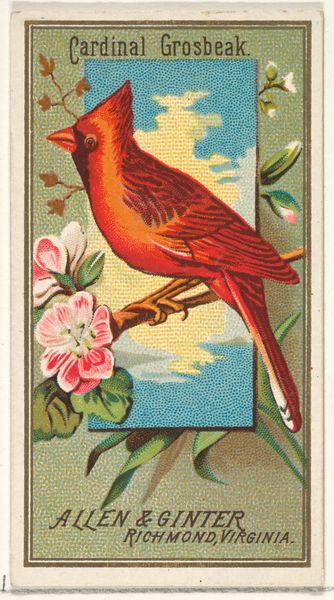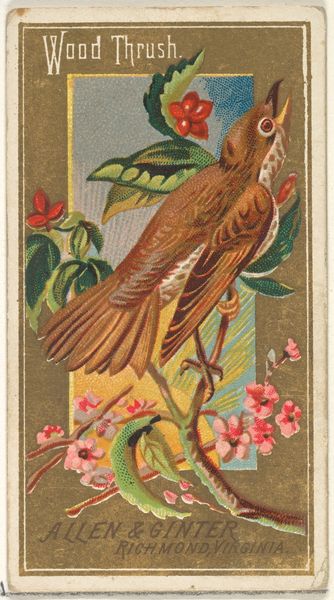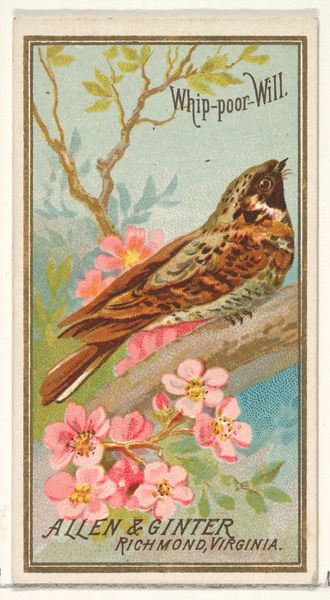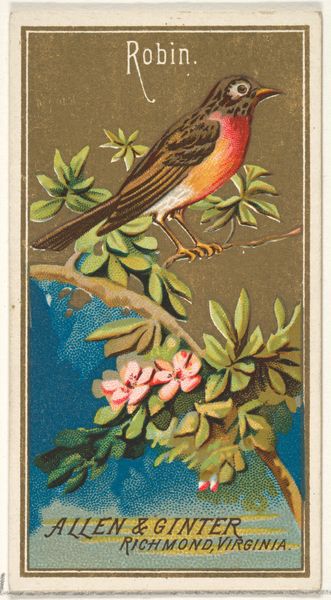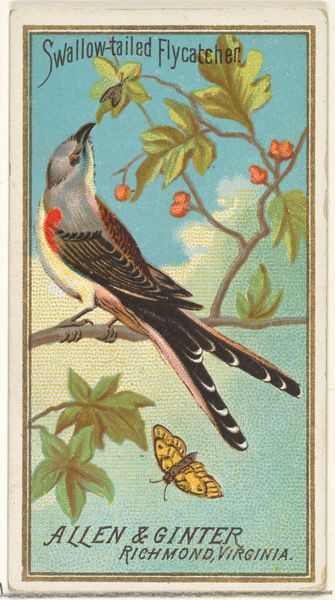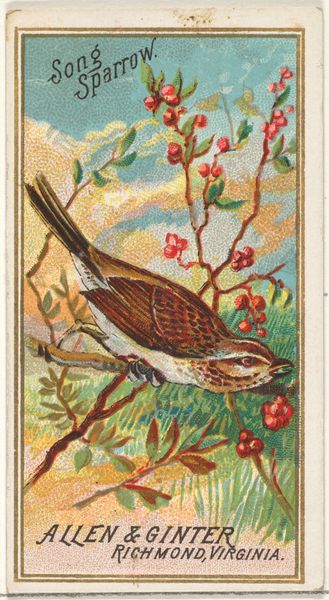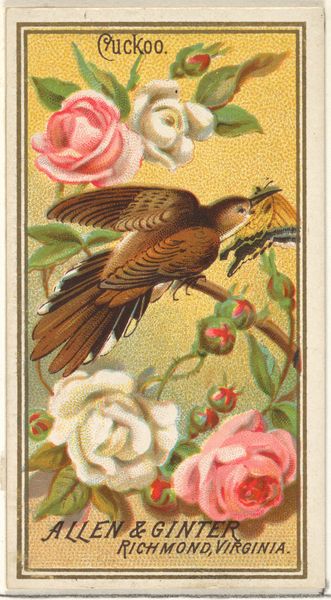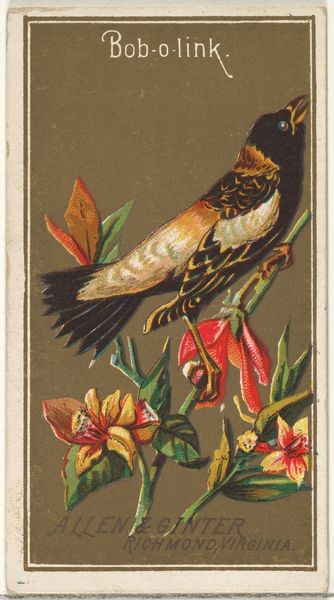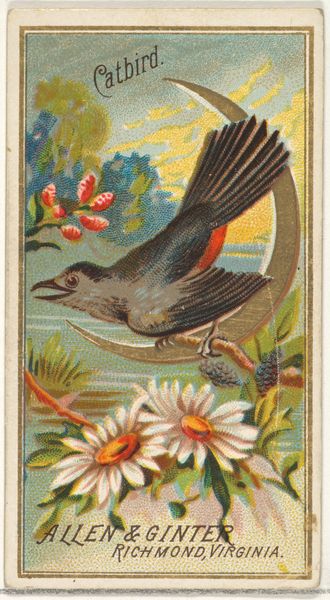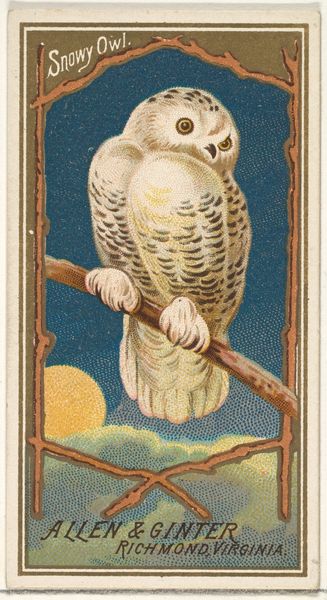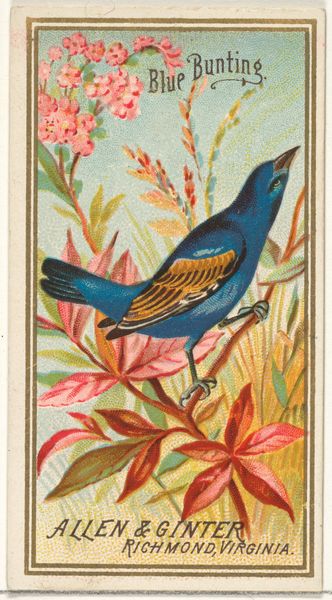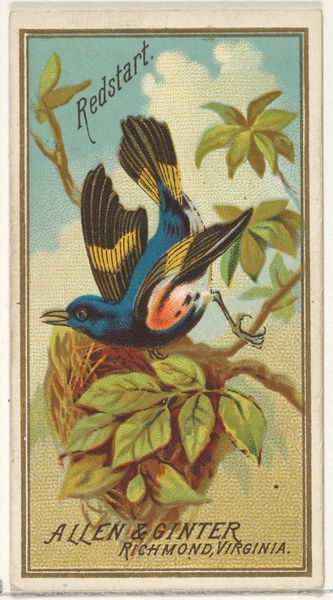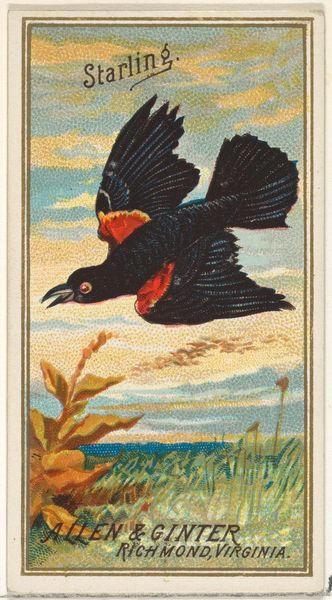
Wood Warbler, from the Birds of America series (N4) for Allen & Ginter Cigarettes Brands 1888
0:00
0:00
Dimensions: Sheet: 2 3/4 x 1 1/2 in. (7 x 3.8 cm)
Copyright: Public Domain
Editor: Here we have the "Wood Warbler" print from the Birds of America series, published around 1888 by Allen & Ginter. It’s made with coloured pencils, and it’s charming – the little scene with the water under the birds feels like a peek into a peaceful world. How do you see this piece fitting into the art landscape of its time? Curator: Well, it's crucial to understand this wasn't fine art in the traditional sense. These were trade cards included in cigarette packs. Consider how they functioned within society – disseminating images, creating collectable series, and boosting brands. Allen & Ginter were masters of mass-produced imagery designed to capture popular imagination. Think about how the aesthetic appeals to contemporary tastes, too. Does it reflect any prevalent artistic movement of the era? Editor: It sort of reminds me of Impressionism, in terms of wanting to depict the common places or even Ukiyo-e’s composition. Curator: Precisely! The Impressionistic flavor with Ukiyo-e design. What message do you think it sent, offering a glimpse of 'American nature' in this format? Was it an invitation? A status symbol for the emerging middle class? Or perhaps even something linked to rising environmental awareness? Editor: That's interesting; I never thought about connecting it to early environmentalism. I was mainly considering it as purely decorative or commercial, designed to simply catch the buyer's eye. Curator: That’s a great point. Consider how it contributed to visual culture; the democratization of art in a capitalist system. Also, how were these birds viewed through an ideological lens? How did they represent the values of American culture at that moment in time? Editor: So much to unpack! I hadn’t thought about the layers of cultural messaging within what seems like a simple bird picture. Curator: Right? This artwork reminds us that art can take any form; this print is also shaped and framed by politics and socioeconomic dynamics of the time it was produced.
Comments
No comments
Be the first to comment and join the conversation on the ultimate creative platform.
